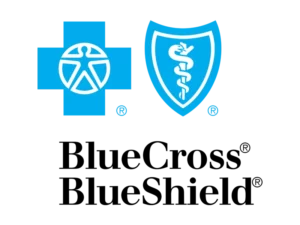Headaches in Teens: Anxiety, and Mental Health Connections

Head throbbing. Lights virtually blinding you. Struggling to think straight through the pain. If this sounds familiar, you’re likely no stranger to intense headaches.
Unfortunately, migraines are common among teens. They can stem from a range of factors, such as anxiety or stress, attention deficit hyperactivity disorder (ADHD), or insomnia, all of which are common in adolescents.
Intense headaches can affect everything in a teen’s life, from their learning at school to their friendships outside of it. But fortunately, there’s good news. There are ample treatment approaches out there to support teens with headaches, and two-thirds of adolescents find relief from migraines with these treatment options.1
To answer all of your questions about teen migraines, this article will outline:
- Signs and symptoms of teen migraines
- Recognizing migraine triggers in adolescents
- Effective treatment options

Is It Common for Teenagers to Have Headaches?
If you have intense headaches that cause you to miss school and cancel plans with friends, you may be wondering if your headaches are a regular part of adolescence. The truth is, migraines are very common in teenagers – around 8-9% of adolescents experience migraines.
However, it’s important to know that these intense headaches are not a “normal” part of growing up – they are a disruptive, disabling, chronic health condition.
The question is, how do you recognize intense headaches in teens?
If you have intense headaches that cause you to miss school and cancel plans with friends, you may be wondering if your headaches are a regular part of adolescence. The truth is, migraines are very common in teenagers – around 8-9% of adolescents experience migraines.
However, it’s important to know that these intense headaches are not a “normal” part of growing up – they are a disruptive, disabling, chronic health condition.
The question is, how do you recognize intense headaches in teens?
Signs and Symptoms of Headaches in Teens
Migraines are an “invisible illness,” meaning you can’t easily see that a person is living with the condition, yet migraines can seriously affect their well-being. From attendance and performance in school to extracurricular and social activities, migraines can take a toll on a teen’s quality of life on a level similar to rheumatoid arthritis or cancer.1
Unfortunately, with no measurable outward symptoms, adolescents who report their severe headaches may encounter disbelief from others, potentially leading to feelings of isolation and worsening symptoms.
It can also be challenging to diagnose migraines in adolescents because symptoms vary from one person to another. Adolescent migraines can also differ from adult migraines. For example, unlike adult migraines, teen migraines are often experienced as pain on both sides of the head and tend to subside more quickly.
Recognizing common symptoms in teens may help identify migraines and lead to treatment. Many people experience specific symptoms just before, at the start of, during, and even after a migraine. Here is an overview of many common migraine symptoms:
Just before or at the onset of adolescent migraines:1
- Pale face
- Fatigue
- Irritability or sudden mood changes
- Yawning
- Visual aura, tunnel vision, blind spots in vision
- Sensory, speech, or motor symptoms
During adolescent migraines:
- Bilateral headache – pain around both temples
- Throbbing sensation in the head
- Vomiting
- Light sensitivity
- Sound sensitivity
- Upset stomach
- Pale skin
- Difficulty thinking
- Lightheadedness
- Fatigue
- Increased sensitivity to smells or odors
- Red eyes
- Pressure in the ear
- Flushed or sweating face
After adolescent migraines:
- Thirst
- Food cravings
- Extreme drowsiness
- Temporary vision changes, such as an aura or blind spots
Note that severe head pain may last anywhere between one and 72 hours in teen migraines.2 Some symptoms, such as fatigue and nausea, may persist for hours after the headache fades. Meanwhile, some new symptoms, such as thirst, extreme drowsiness, or intense food cravings, commonly appear once the pain subsides.
If you have experienced some of these migraine symptoms, it might help to learn more about common causes and triggers of teen headaches. As you will see, some common triggers can be avoided through awareness and lifestyle changes, while effective professional treatments may also be an option for you.
Causes and Triggers of Adolescent Migraines
If you experience severe headaches that disrupt your school and social life, you’re likely eager to understand what causes them. Research has identified many factors that are associated with an increased risk of teen headaches. Some of these include:
- History of migraines in parent(s)
- Obesity
- Being female
- ADHD
- Learning difficulties
- Frequent, intense crying as a baby
- Adverse childhood events (parental divorce, financial stress, death of a loved one)
- Sleep disturbances such as insomnia
- Anxiety
- Depression
- Stress (psychological or physical)
Stress-related headaches in adolescence are a common issue. According to research, stress is a trigger in around 70% of migraine patients.3 Likewise, approximately 50-80% of all occurrences of migraine, whether in adults or youth, are linked to a stressful event.4
It is no secret that today’s teens frequently experience stress. And, as you may know, with unpredictable bouts of intense pain and the weight of missing school and activities, migraines themselves can be an additional stressor for people who experience them.3
Anxiety is also highly linked with migraines, and research shows that one in four adolescents has an anxiety disorder.5 Anxiety is a more persistent, chronic state of uneasiness than stress. People with anxiety are much more likely to experience migraines, and people who have migraines are at a much higher risk of having an anxiety disorder.6 People who have anxiety are also more likely to have chronic migraines rather than occasional episodes.6
It’s important to know that, with awareness and support, managing teen stress and anxiety is very possible. Many migraine patients experience fewer migraines after effective treatment of underlying anxiety.6
Below, we will cover proven migraine treatment options for adolescents. These include:
- Medication
- Cognitive Behavioral Therapy (CBT) for migraines
- CBT to manage stress and anxiety
- Lifestyle changes
Support Options for Headaches in Teenagers
If you experience migraines, it may be encouraging to learn this: Approximately 67% of teens find relief through treatment.1
Migraine treatment options include:
- Medication
- Cognitive Behavioral Therapy (CBT)
- Therapy to manage stress and anxiety
- Lifestyle changes aimed at promoting healthy coping strategies and teen wellness
Medication for Migraines
Medication treatment for migraines can be broken down into two categories: Acute and preventive therapies.
Acute Therapy:2 This may include specific medications that are to be taken as soon as you feel a migraine coming on. They may also be referred to as ‘rescue medications.’ These medicines are intended to shorten and lessen the symptoms of a migraine once it has started. Other coping strategies for headaches include resting in a dark, quiet place and hydrating.
Preventive Therapy:2 Patients with frequent or chronic migraines may be prescribed preventive medications. Migraines are categorized as “frequent” if you experience more than four episodes per month, and “chronic” if you have more than fifteen migraines per month.2 If this is your experience, specific preventive medications may be prescribed, along with lifestyle changes and/or a type of treatment called cognitive behavioral therapy.
Recent studies have suggested that preventive medications for migraines may be effective only due to the placebo effect. Since medications can pose a risk of side effects or adverse reactions, some recent evidence supports relying on nonmedication treatments for migraines. Cognitive behavioral therapy is a well-researched, safe, non-medication therapy for migraines.
Cognitive Behavioral Therapy
The most well-researched and supposedly most effective treatment available for migraines in adolescents is cognitive behavioral therapy. Studies refer again and again to this type of therapy as the “gold standard” treatment for teen migraines because it is well-known, safe, and effective.
Cognitive behavioral therapy (CBT) effectively decreases the frequency of migraines in adolescents.7 It also reduces overall disability associated with migraines. CBT is well supported by science as an effective first-line treatment for headaches and migraines in young people.7
CBT is also an effective treatment for underlying anxiety disorders. This is especially important as migraines are highly linked to stress and anxiety disorders, and research shows that many people get relief from migraines after properly treating their anxiety.
Lifestyle Changes
Lifestyle modifications can be an effective part of treating migraines in adolescents.2 Beneficial lifestyle changes may include:4
- Identifying migraine triggers
- Identifying relief triggers, such as resting in a dark space during a migraine
- Improving sleep quality and quantity
- Staying hydrated
- Eating regular, balanced meals
- Getting plenty of physical activity
- Maintaining a healthy weight
- Limiting the use of caffeine
- Avoiding alcohol, cigarettes, and drugs
- Eliciting parental support for headache management
- Learning and using adolescent relaxation techniques
- Developing coping strategies for headaches
- Reducing stress
- Seeking early intervention for stress-related symptoms
Making healthy lifestyle changes – and sticking with them – can sometimes fall into the “easier said than done” category. Many people find it easier to change habits and routines if they share their goals with a parent or trusted friend who will gently encourage and support the new routines. Working with a knowledgeable therapist can also be an effective way to implement lifestyle goals and reduce your migraine frequency.

Mission Prep: Early Intervention for Stress-related Symptoms
At Mission Prep, we understand that migraines can have a severe impact, especially during your teenage years. We are here to support you. Our highly qualified team offers cognitive behavioral therapy – an effective first-line treatment for migraines, and the “gold standard” therapy for tension headaches as a result of underlying stress and anxiety. We can also help you get to know your migraine triggers and formulate a management plan so you can get faster relief from migraines in the future.
Unpredictable bouts of pain, school absences, and canceled social plans can leave you feeling isolated. At Mission Prep, we see you. We are here for you. Reach out to us today.
References
1. Szperka C. (2021). Headache in Children and Adolescents. Continuum (Minneapolis, Minn.), 27(3), 703–731. https://doi.org/10.1212/CON.0000000000000993
2. American Headache Society. (2024b, November 13). Migraine in the adolescent Patient Overview. https://americanheadachesociety.org/news/migraine-in-the-adolescent-patient-overview#:~:text=Recognizing%20the%20Symptoms%20of%20Adolescent%20Migraine&text=Teens%20often%20experience%20bilateral%20headaches,occur%20before%20the%20head%20pain.
3. Maleki, N., Becerra, L., & Borsook, D. (2012b). Migraine: Maladaptive brain responses to stress. Headache the Journal of Head and Face Pain, 52(s2), 102–106. https://doi.org/10.1111/j.1526-4610.2012.02241.x
4. Raucci, U., Boni, A., Evangelisti, M., Della Vecchia, N., Velardi, M., Ursitti, F., Terrin, G., Di Nardo, G., Reale, A., Villani, A., & Parisi, P. (2021). Lifestyle Modifications to Help Prevent Headache at a Developmental Age. Frontiers in neurology, 11, 618375. https://doi.org/10.3389/fneur.2020.618375
5. Kowalchuk, A., Gonzalez, S. J., & Zoorob, R. J. (2022, December 15). Anxiety disorders
in children and adolescents. AAFP. https://www.aafp.org/pubs/afp/issues/2022/1200/anxiety-disorders-children-adolescents.html
6. Petrarca, K. (2023, September 21). The link between migraine and anxiety. Association of Migraine Disorders. https://www.migrainedisorders.org/the-link-between-migraine-and-anxiety/
7. Van Diest, A. M. K., & Powers, S. W. (2018b). Cognitive Behavioral therapy for Pediatric headache and migraine: Why to prescribe and what new research is critical for advancing integrated biobehavioral care. Headache the Journal of Head and Face Pain, 59(2), 289–297. https://doi.org/10.1111/head.13438













